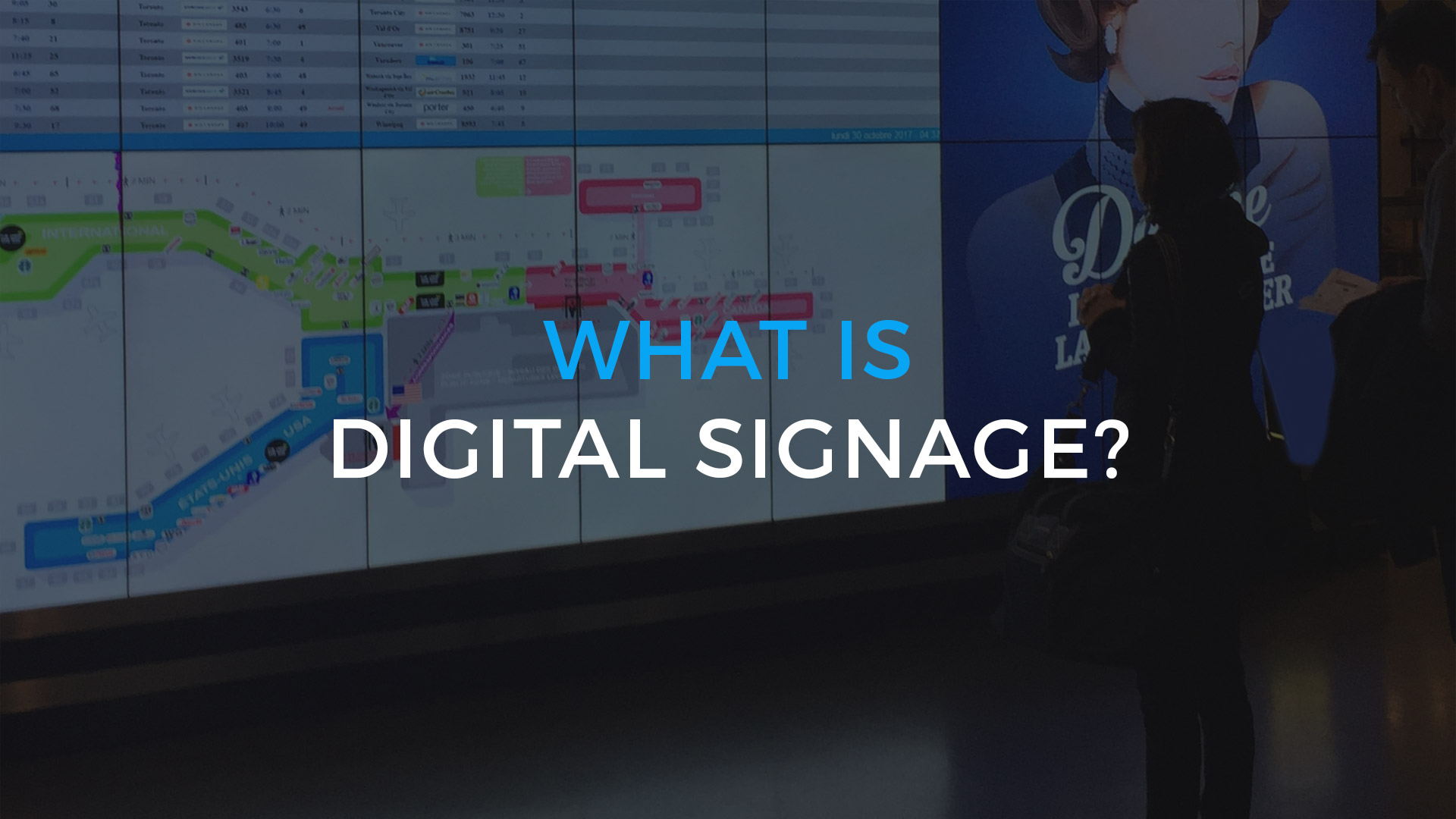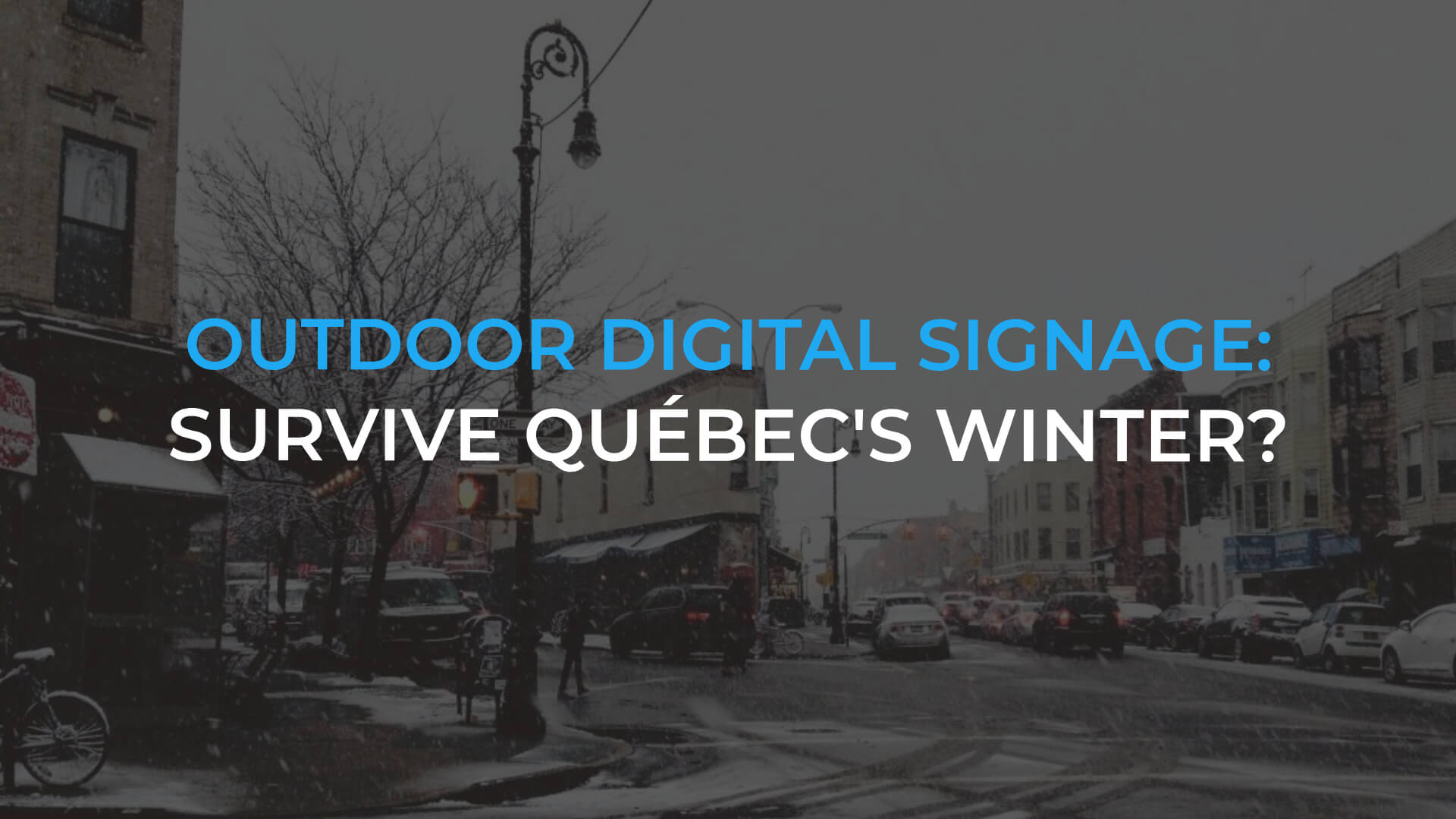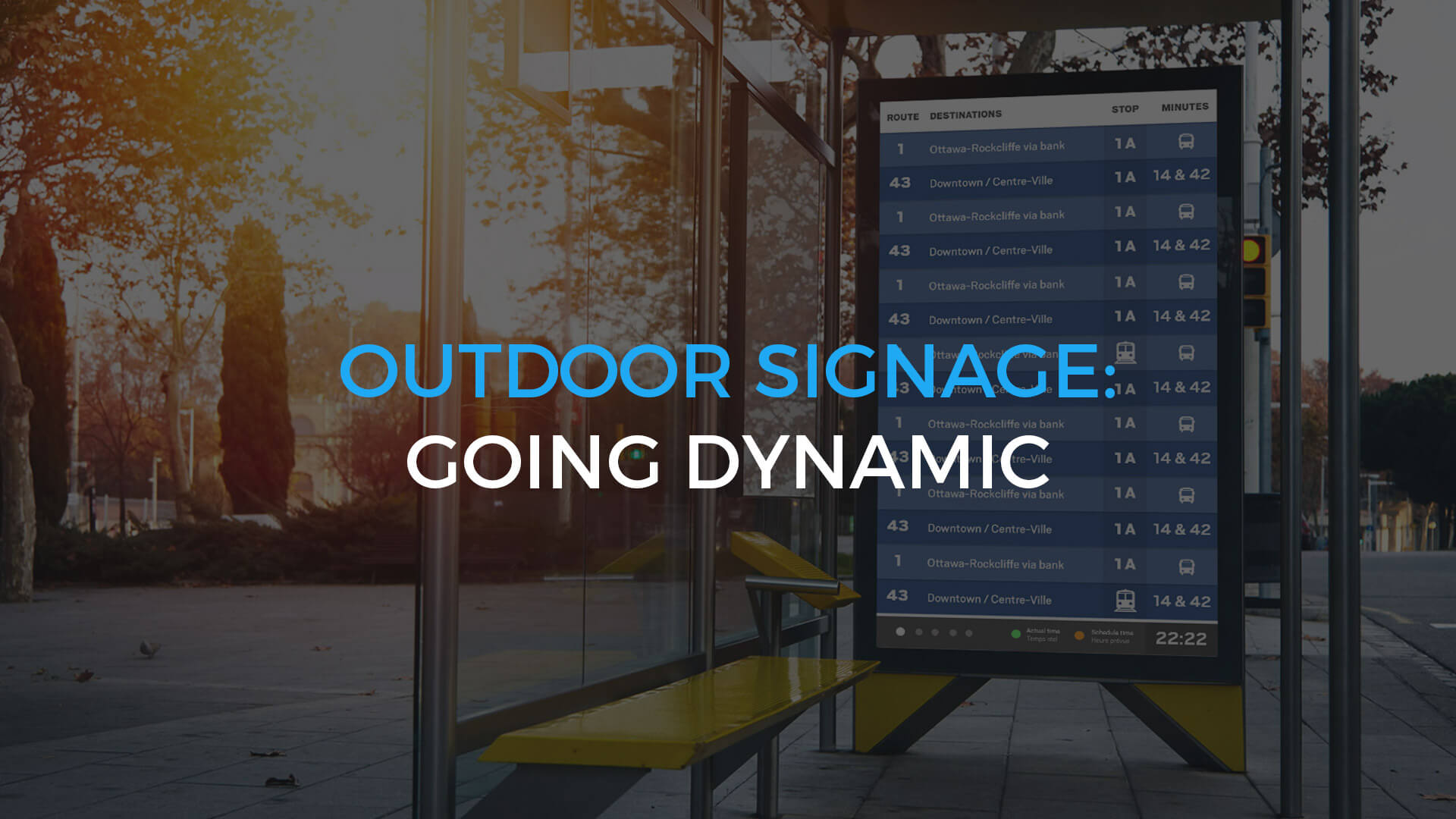Keeping up to date with the newest marketing tech can be a struggle for any business owner. The space changes so quickly, so how can you know if the latest cutting-edge solution is right for you? Dynamic digital signage is one such solution. Understanding the ins and outs will help you make the most informed decision about whether it's a product that works for your business. Below, we address some of the general aspects of dynamic digital signage to help point you in the right direction.
What is a digital signage content strategy and why make one?
What Can Dynamic Digital Signage Be Used For?
Digital signage has a variety of uses that can be broken down into three main categories:
Communicating with Employees
"Since we've started using digital signage, we no longer hear our employees say, 'I didn't know.'"
Workplace communication can be tough. To help facilitate communication, companies can use digital displays and screensavers to broadcast important information to their employees, such as company messages, performance indicators, safety reminders, and more. These messages can serve a variety of purposes: they can be informative, educational, motivational, or simply entertaining. Some companies even broadcast information to help prevent workplace accidents. Louis-Philippe Péloquin, Director of Communications at ArcelorMittal, said that since installing digital signage, they "no longer hear [their] employees say, 'I didn't know.'" Improved communications can lead to increased motivation, higher productivity, and improved safety.
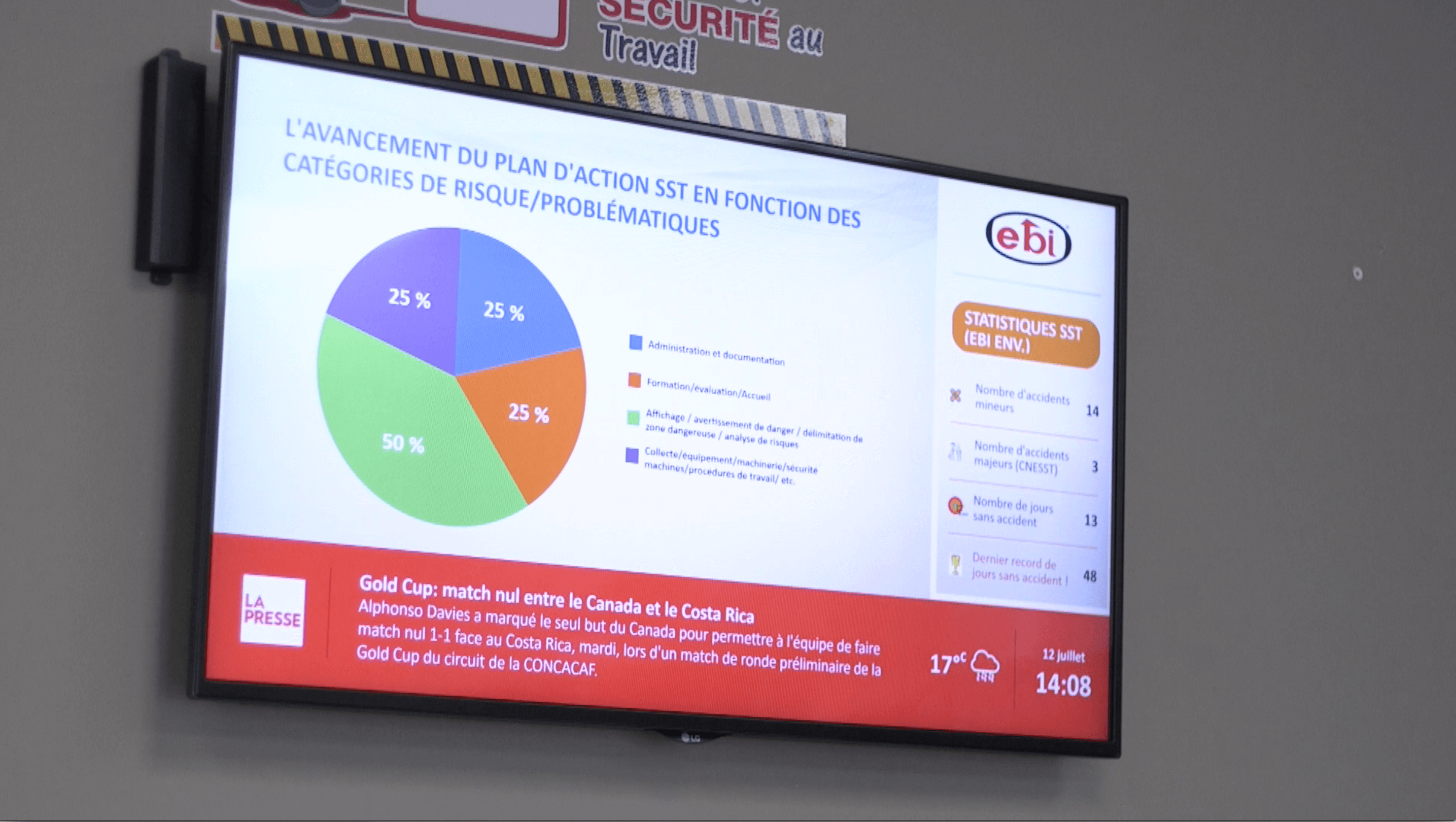
Communicating with Customers
"McDonald's restaurants now display their menus digitally, but they still sell the same Big Mac."
Businesses large and small are communicating with their customers in new ways. Many companies are seeking solutions to reach their customers differently. Digital displays paired with dynamic content management software are an innovative way to increase awareness about a product or service and can be updated in real time. Digital signage is also four times as likely to attract a customer's attention than a traditional display. For example, large multinationals like McDonald's use digital signage to display and update their menus. Some RE/MAX, Coldwell Banker, and Century 21 real estate brokerages, on the other hand, use it to promote the properties they have for sale, both in displays outside their offices and within their offices themselves. Digital displays are sleek and tech forward, and brokerages can use them to elevate the perception of their brand among both customers and employees by sharing office data: sales figures, active listings, properties in escrow, testimonials, and more. Learn more about how one real estate agency owner, Claude Allard, radically changed his business with digital signage solutions in our full case study.
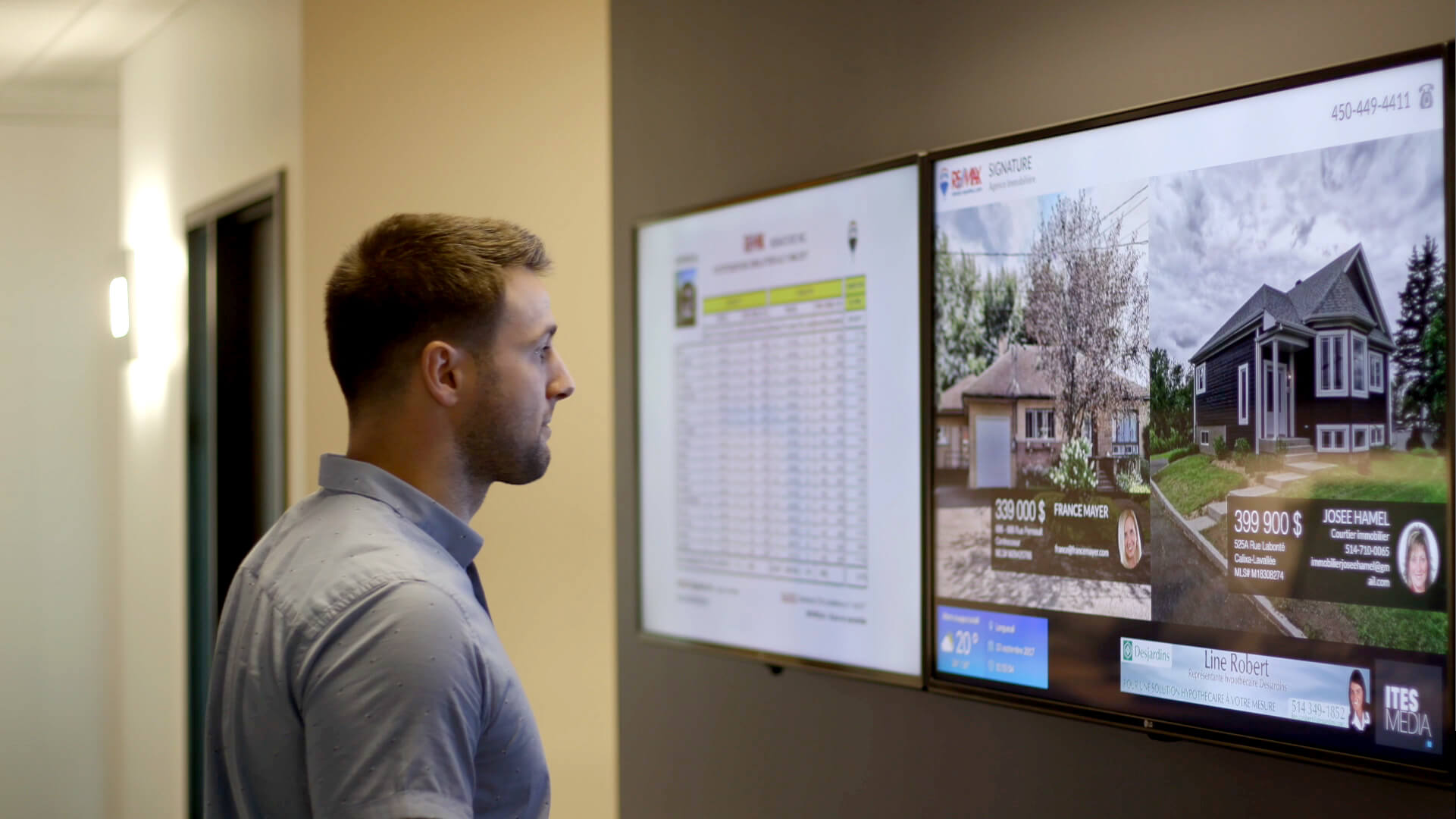
Communicating with Users
These days, engagement is the buzzword on every marketer's lips. Users expect to be engaged, whether they are waiting for the bus, navigating an unfamiliar city, or visiting the doctor. Digital signage is a means for connecting and engaging with users in a meaningful way. For example, the City of Montréal makes driving easier by using digital signage to let drivers know about road work and available parking spaces throughout the city. McGill University Health Centre uses digital screens and terminals to help visitors find their way around the hospital. And several municipalities use digital signage to inform public transportation users about delays, schedule or route changes, and general information like the weather and news.

The Most Popular Industries Using Digital Signage
The Digital Signage Ecosystem
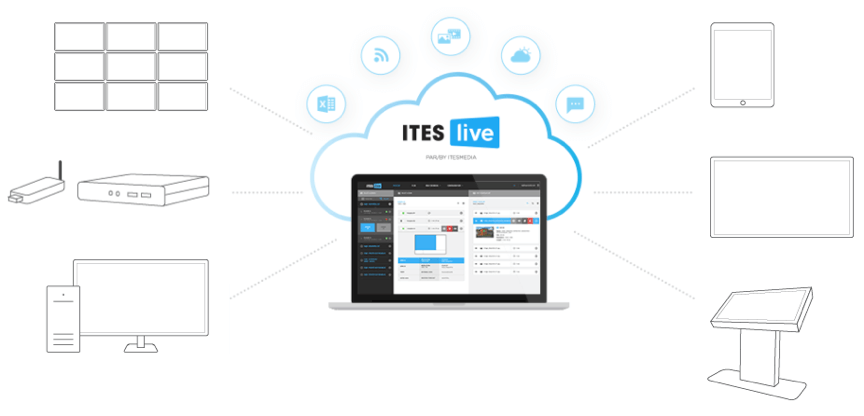
While relatively simple, dynamic digital signage requires specific hardware and software components to work properly. The diagram above shows how all these components communicate with each other. Let's take a closer look at the basic digital signage components.
Software is the heart of the digital signage ecosystem. You might not be able to touch it, but it's what controls and sends content where you want, when you want it.
Digital Signage Software
In the digital signage ecosystem, software is the core. It may be intangible, but it's what controls and sends content to the desired screens according to a predetermined schedule. For the past several years, this software has often been Cloud-based and accessible from any internet-connected platform. It has undeniable advantages, but when it comes to the important elements of reliability and security, some software comes up short. Buyers should make sure that their providers use a solid and secure infrastructure, such as Microsoft Azure. If you're unsure of how to choose the best software for you, check out our article about buying the right software.
At ITESMEDIA, we've developed our own proprietary digital signage software called ITESLIVE. It allows for automated communications management and even allows you to connect directly to your own databases to update information like KPIs or projections seamlessly and dynamically. Allow us to convince you: schedule a free online demo today.
Digital Displays: Not Your Ordinary TV
Displays are where your content is dynamically shown. Displays look like televisions but have features that make them suitable for commercial use, such as extended service lives, waterproofing, and increased brightness. Digital displays can be used on their own or can be put together to create video walls of any size. The screensaver of a computer can also be used to display content. Finally, digital LED panels, like those that show the number of available parking spaces in a given location, are yet another example of a type of digital display.
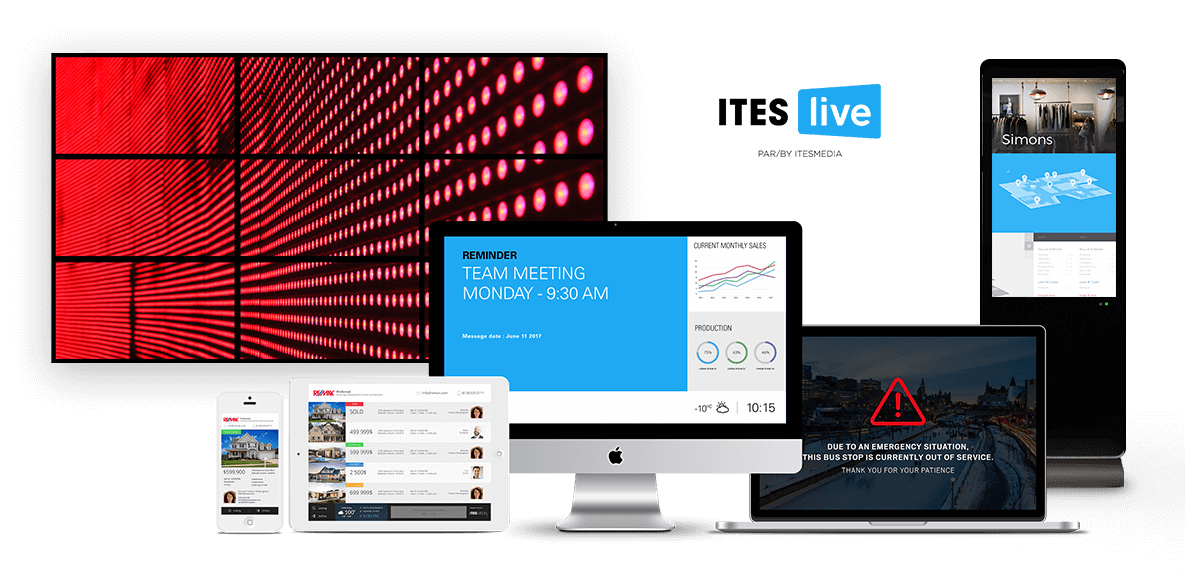
Interactive Displays
Interactive displays take it up a notch: like digital displays, they are screens that display content but also integrate an advanced tactile interface to provide users with a dynamic, interactive experience. They can be used anywhere, from shopping centers to help visitors locate a particular store, to real estate offices to show potential buyers the features of various properties. Even tablets, which have become increasingly popular in the past few years, can use used to deliver and display interactive digital content.
Media Player
The media player is the link between the digital signage software and your screens. It is what allows you to display the content created in your content manager on your entire network of screens. It's generally quite small and has the same basic functionality as a computer. It can connect to the internet via an Ethernet cable, Wi-Fi, or even a cellular LTE network and plugs into your screens using an HDMI cable.
Another alternative technology that has been developed recently and that is being used more frequently is called SoC, which stands for system on chip. This system is less expensive than an external media player but doesn't always offer the right level of performance. It can also be more expensive to perform maintenance on the signage if there's an issue. We can help you determine whether a media player or SoC technology is right for you.



